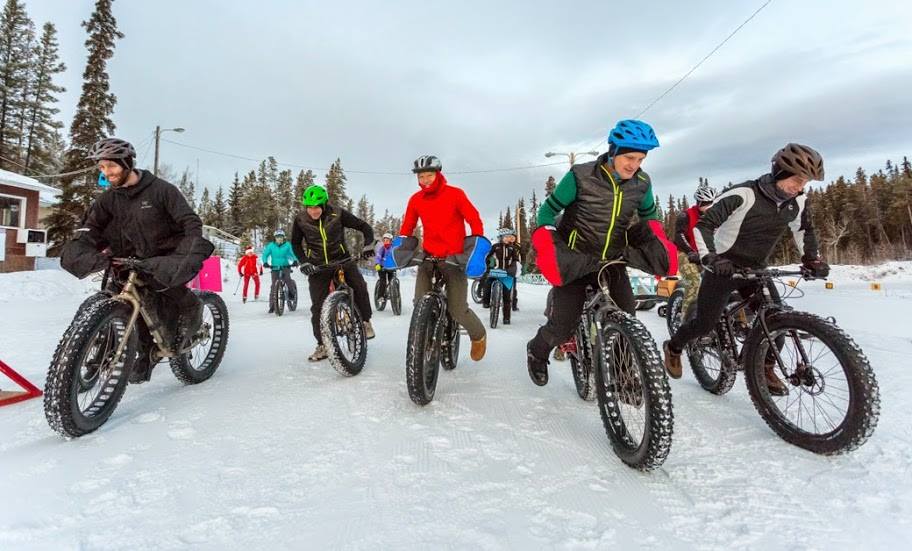Whitehorse, Yukon fat bikers mark the solstice with 2015’s 5+ Hours of Light race
For more than 50 riders in Whitehorse, the shortest day of the year, the CBC reported, was celebrated in the saddle of a fat bike.


There are all sorts of ways to mark the winter solstice, representing a broad range of traditions. For more than 50 riders in Whitehorse, the shortest day of the year, the CBC reported, was celebrated in the saddle of a fat bike.
The event, held on Grey Mountain last weekend, was called “5+ Hours of Light.”
Organized by Contagious Mountain Biking Club, this year’s race saw “dozens” of fat bikers take to the Yukon trails—a remarkable increase over the standards set by its first year in 2011. “In 2011,” said Jenn Roberts, speaking with the CBC, “there were eight of us. So I think the biggest change has been just the sheer number of people who are coming out to ride.”
There’s also, she suggests, the laid-back feel of the event itself that keeps people coming back. It’s a diverse range of riders who take part, with everyone from seasoned racing veterans to first-timers saddling up, and the effect is a positive one. The result is a casual, welcoming race, she said, “just sort of celebrating solstice and fat bikes.”
The race is more about endurance than anything else, and it’s pretty open-ended in that respect. Instead of a set number of laps, fat bikers try to do as many circuits through the trails as possible during the hours of daylight that are available—a considerable limitation the weekend before the winter solstice in Canada’s north. With the sun rising at 10:08 am and setting at 3:46 pm, it makes for an eventful few hours for participants, their wide treads rolling over the snow—if a little more slowly, and with more resistance, than some were used to.
Speaking to reporters, many of 2015’s riders spoke of this being their first year taking part in the Yukon race—and the unexpected challenges it presented.
“It’s like mountain biking in slow motion,” said Andrew Reid, a rider more accustomed to mountain biking than fat biking. “It’s like riding with a large lead weight behind you that you’re dragging.” Many described the effort as being quite surprising, feeling the burn after just two or three laps.
Those course conditions made Ian Parker’s win that much more satisfying, after completing nine laps just minutes before sundown—the equivalent of 80 kilometres in the snow. Virginia Sarrazin was the winner in the women’s division with seven laps, while the Flat Nolans clocked the same in the team category with their winning ride.
